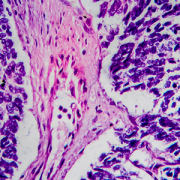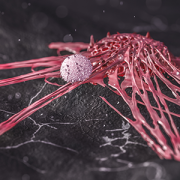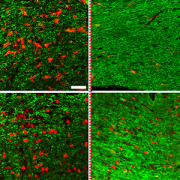Evolution of risk stratification for Wilms tumor

Light micrograph of Wilms tumor.
Wilms tumor is a rare kidney cancer that primarily affects children. Also known as nephroblastoma, it is the most common malignant renal tumor in children. Advances in the treatment of Wilms tumor are some of the great achievements in the field of oncology, improving survival to 90% and decreasing the burden of therapy.
A key factor in the success of Wilms tumor treatment has been improved risk stratification, enabling augmentation or reduction of therapy depending on a patient’s risk of relapse. In a review article in Current Opinion in Pediatrics, Jeffrey Dome, M.D., Ph.D., vice president of the Center for Cancer and Blood Disorders at Children’s National Hospital, Marie V. Nelson, M.D., assistant professor of pediatrics in the Division of Oncology, and their colleagues look at the evolution of clinical and biological factors that have been adopted for Wilms tumor.
The authors found that the original National Wilms Tumor Study Group (NWTSG) and International Society of Pediatric Oncology (SIOP) studies relied solely on tumor stage to define treatment. Over time, however, additional factors were incorporated into the risk stratification schema, allowing for a multifactorial precision medicine approach.
The authors conclude that “the application of new clinical and biological prognostic factors has created unprecedented ability to tailor therapy for Wilms tumor, accompanied with improved outcomes. Current and future trials will continue to enhance precision medicine for Wilms tumor.”
Read the full study in Current Opinion in Pediatrics.











